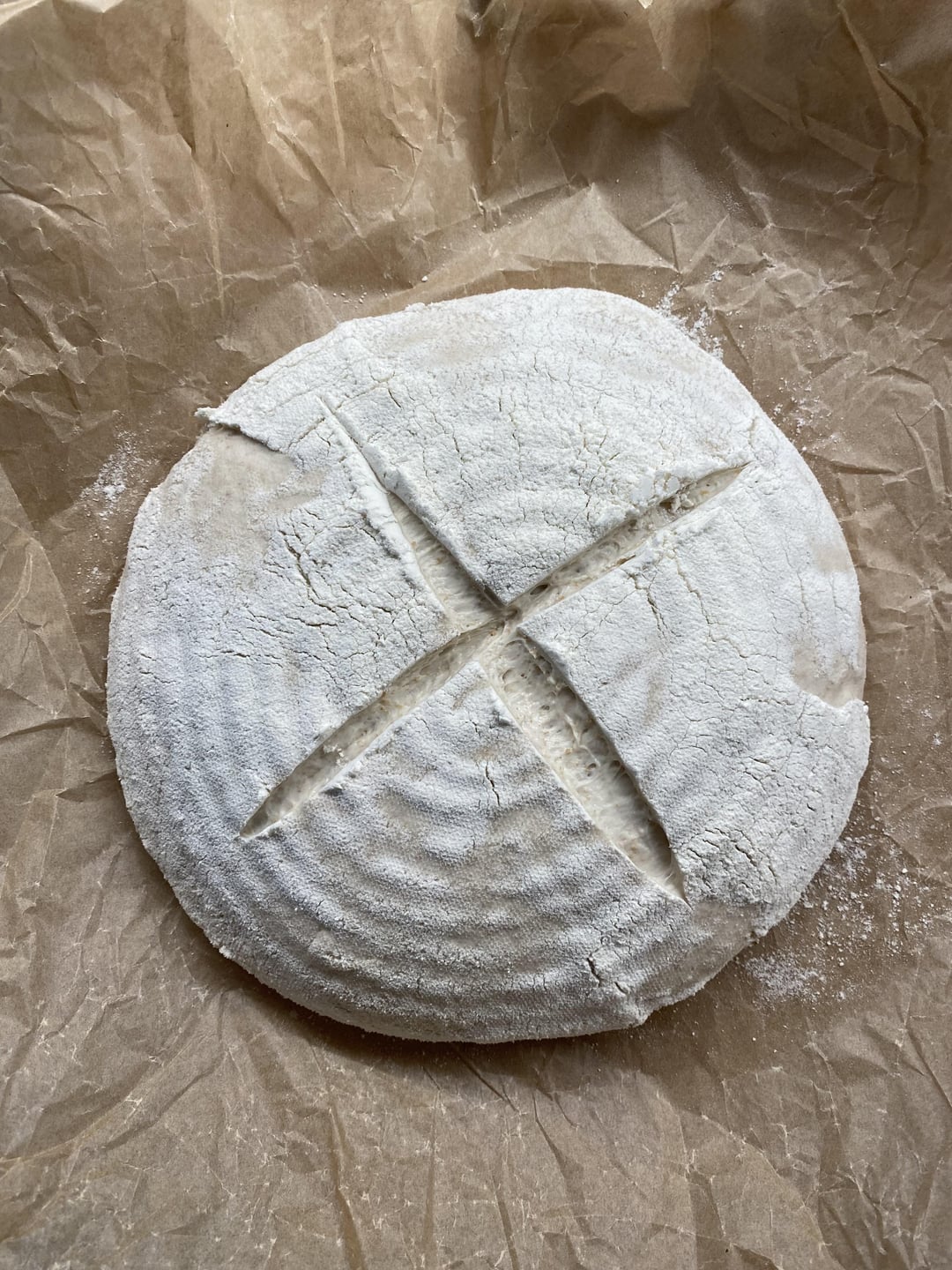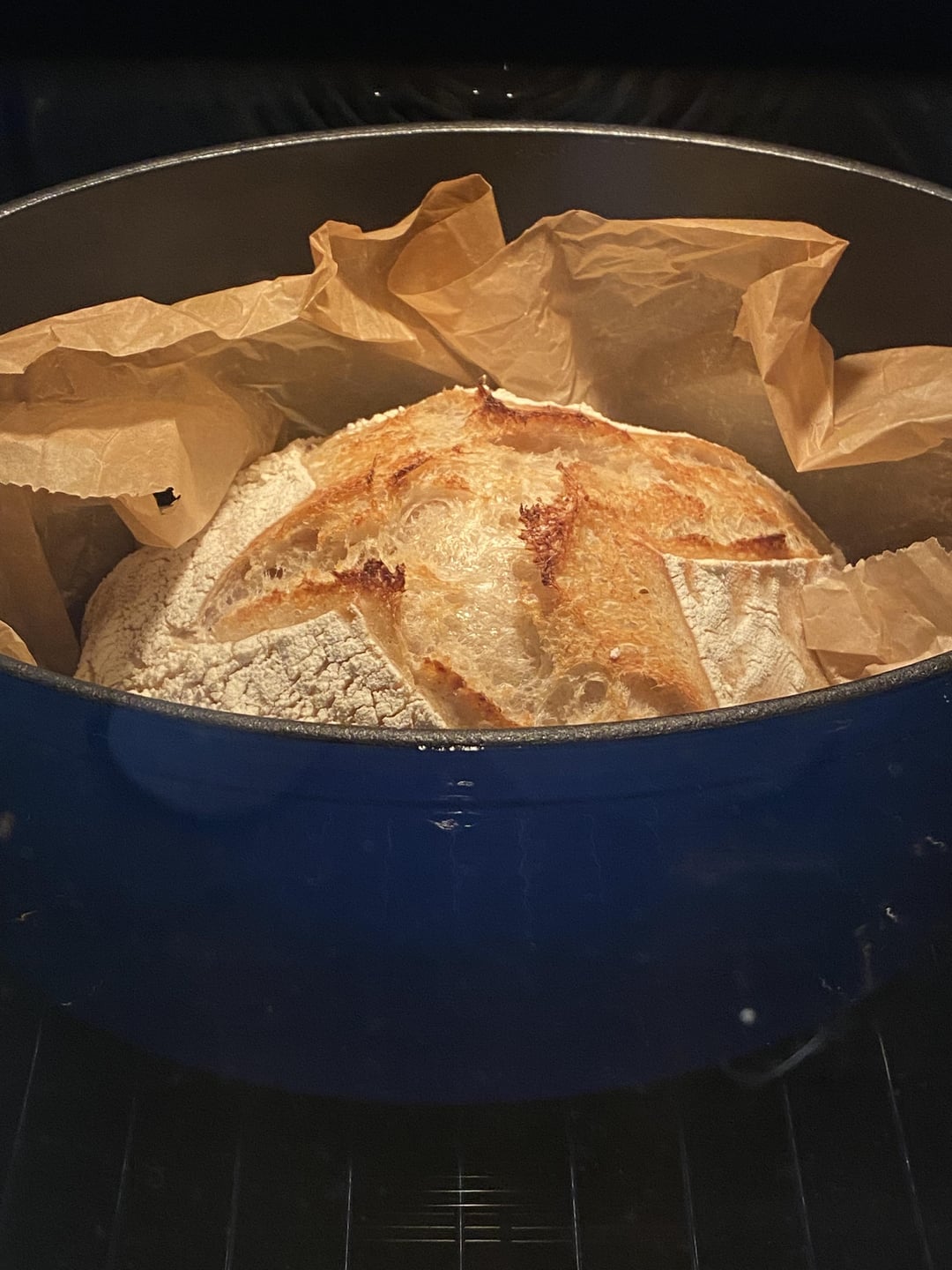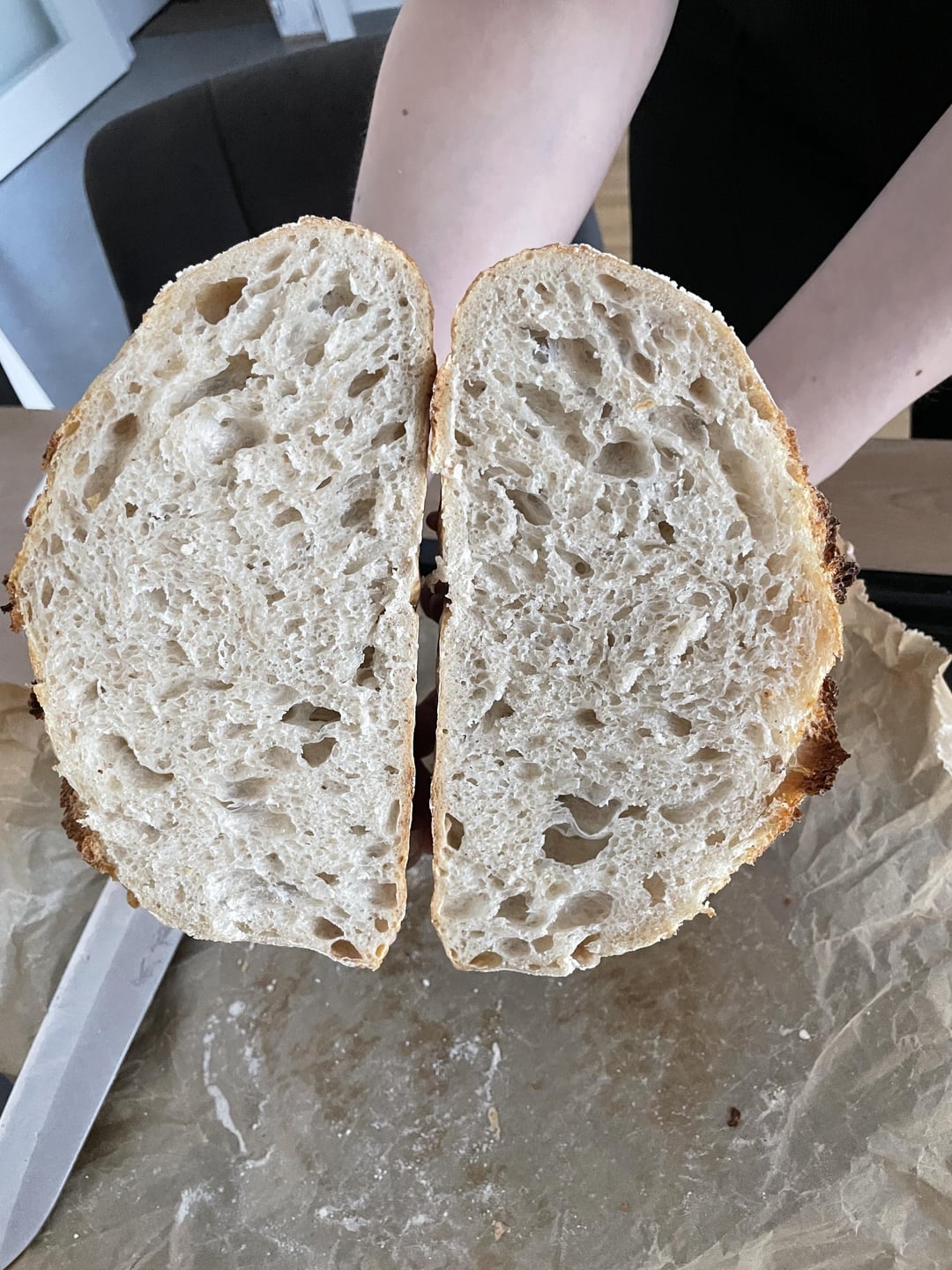



Turns out, if you stay patient and feed your starter right (&follow all necessary tips for bread making) you get rewarded with awesome sourdough bread.
I kept feeding my starter for three weeks. I started with 60g of wholewheat flour and 60g of water. Day 3 the starter exploded and went over the jar. I read about it being a false raise. So I kept being patient and continue to feed it.
In week two I started noticing this very acidic smell – almost gave up on it, thinking I did something wrong … but again, searched the information on reddit and went back to feeding. starter didn’t do much of raising, so I started to feed it with ap flour and also reducing water for about 10grams less…So 60g ap flour and 45-55g of water , depending on the consistency.
Then things started to change. The smell got lovely, bread like and with every feed it got higher in the jar.
I also started to feed it twice per day at this point.Once in the morning and once before bed.
In the middle of week three , I noticed a different smell – kind of doughy and acidic (BUT not the same strong acidic smell like in the week two).
I did the float test and it was successful. I knew it was time to make my first loaf.
For anyone struggling with the smells of their starter…it gets better. Do some tweaking of your own, by the feeling…I feel like I know my starter now.
by SubjectConcern5517

4 Comments
I don’t know how else to say it, that’s a fantastic result. That’s more like 20th loaf territory. Big oven spring AND nice crumb? Doesn’t happen often for a first timer. Nicely done.
•Adding the full recipe•
(recipe for starter already included in main post)
For one loaf I used :
400g ap flour
60g whole wheat flour
350g water
100g of starter
10g sea salt
First I started with 350g of water in a bowl. In that bowl I added 100g starter and dissolved it with my fingers. To the mixture I added both flours and salt.
Mixing with my hand to incorporate everything (the dough should be sticky). Covered it and left it to rest for 30 minutes, then started with stretching and folding. Repeated four times with 30min breaks between.
After the last stretch and fold I left it to rest for 6 hours on room temperature (my apartment is pretty nice and warm since its winter time here), make sure you keep it somewhere warm.
After 6 hours I slightly floured the counter and started to shape the loaf (I just turned the bowl upside down and carefully let the dough fall down).
After shaping the loaf I carefully transferred it to nicely floured bread basket (nice side down) and pinched it together one last time.
I transferred the load to the fridge for slow fermentation for 12hours.
In the morning I turn on the oven to 260 celsius with dutch oven in it. The loaf should be somewhat room temperature before baking,so at this time I removed it from the fridge. After one hour the dutch oven should be nice and warm.
Carefully I transferred the loaf (by tipping it) on the parchment paper and inserted it into the dutch oven.
I sealed it with the lid and baked it for 20min. After 20min I lowered the temperature a bit – to 230 degrees celsius and uncovered the dutch oven, so the loaf gets a nice color – baking it for another 15-20 minutes, keeping an eye on it tho.
And thats it.
Relay nice work 🙂
Looks great!
Dang…I’m impressed.